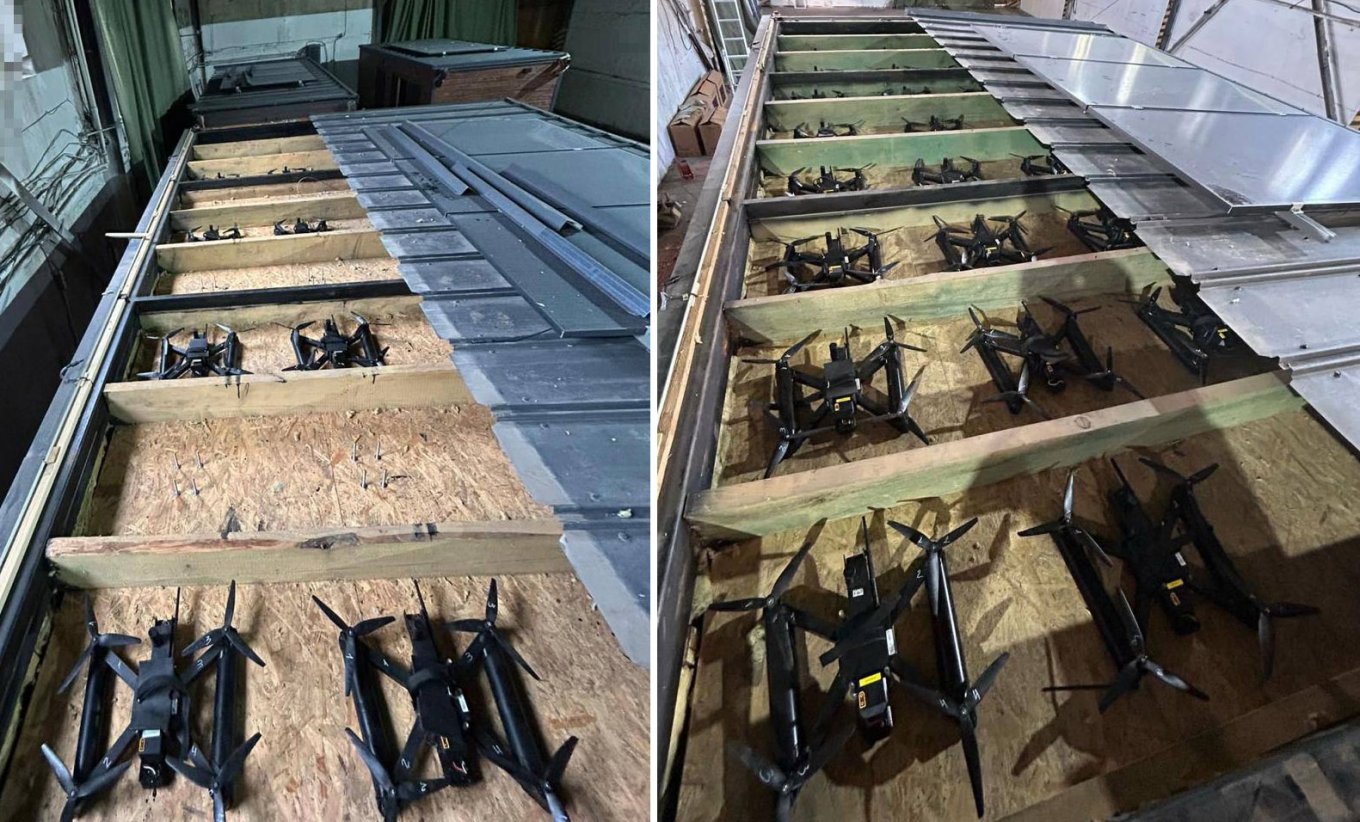Project Volley: The UK’s High-Speed Drone Launch from Vehicles
The United Kingdom's Ministry of Defence (MoD) has launched an ambitious initiative known as Project Volley, aimed at developing a highly mobile, rapid-launch system for unmanned aerial vehicles (UAVs). This project seeks to enhance the UK's defense capabilities by enabling the deployment of multiple drones from standard transport vehicles, such as Mercedes Sprinter or Ford Transit vans.
The Vision Behind Project Volley
The MoD's request for information outlines a system capable of launching five drones within four minutes, with each UAV reaching speeds of 200 km/h upon launch. The drones will be unpowered during takeoff, relying solely on the launcher for acceleration. The system must be lightweight, robust, and adaptable, allowing for the integration of smaller UAVs if necessary.
One of the key requirements is ease of operation—ideally, the system should be managed by a single operator, with a maximum of three personnel involved. Additionally, the launcher must function in extreme weather conditions, operating within a temperature range of -20 to +55°C, and be resistant to dust and water.
Technical Specifications and Challenges
The MoD has set stringent technical criteria for the launcher:
Maximum system weight: 275 kg
Launch angle: Adjustable between 8 and 33 degrees
Minimal acoustic and visual signature to enhance survivability
All-weather capability ensuring reliability in diverse environments
Furthermore, the system must be cost-effective, with a price cap of £300,000 per unit (approximately €365,000). The MoD is also keen on ensuring that the launcher can be mass-produced, with an anticipated demand for over 20 units within six months of the project's launch.
Timeline and Industry Participation
The timeline for Project Volley is highly ambitious:
Industry Day: June 8, 2025
Proposal Submission Deadline: June 11, 2025
Final System Selection: October 2025
First Deliveries: January 2026
The MoD has invited industry players to submit proposals, with selected companies receiving funding to develop prototypes for testing. The final selection process will determine which system best meets the UK's defense needs.
Strategic Implications
Project Volley represents a significant leap in military drone technology, emphasizing speed, mobility, and efficiency. By integrating UAV launchers into standard transport vehicles, the UK aims to enhance its tactical flexibility, allowing for rapid deployment in various operational scenarios.
This initiative also underscores the growing importance of unmanned systems in modern warfare, as nations seek innovative solutions to improve their defense capabilities. If successful, Project Volley could set a new benchmark for drone deployment, influencing similar projects worldwide.
As the UK moves forward with this groundbreaking initiative, the defense industry eagerly awaits further developments, anticipating the impact of Project Volley on future military operations.
Potential Industry Collaborators and Technological Innovations
Several aerospace and defense companies are likely to be interested in Project Volley, given its unique technological and tactical requirements. Established UAV manufacturers, as well as firms specializing in military-grade launch systems, could play a role in the development of this rapid-launch platform. Companies with expertise in kinetic launch technologies, autonomous UAV systems, and mobile defense solutions might contribute innovative designs to meet the MoD's strict specifications.
Potential partners could explore a range of launch mechanisms, including compressed air, spring-loaded systems, or even rail-based acceleration to achieve the required drone velocity. Each approach has its advantages and challenges, particularly concerning reliability, cost-effectiveness, and deployment efficiency in combat environments.
Tactical Advantages and Battlefield Applications
A multi-drone rapid launch system like Project Volley presents several strategic advantages for the UK’s armed forces.
Enhanced reconnaissance capabilities: Deploying multiple UAVs simultaneously allows for broad surveillance coverage, helping military units track enemy movement or assess battlefield conditions.
Swarm tactics in combat scenarios: Coordinating a group of drones to overwhelm adversary defenses could be a game-changer in modern warfare, using decentralized AI control for dynamic mission execution.
Flexible deployment in urban and remote environments: The use of commercial vans as launch platforms means military forces can deploy drone swarms from inconspicuous locations, adding an element of stealth to operations.
Moreover, the lightweight and adaptable nature of this system makes it ideal for integration into a wide range of military missions, from border security and reconnaissance to rapid-response defense strategies.
Challenges and Future Prospects
While Project Volley offers groundbreaking potential, several challenges must be overcome for successful implementation:
Technical reliability: Ensuring drones launch smoothly and perform as expected under extreme conditions is critical.
Operational security: As UAV technology advances, adversaries may develop countermeasures such as electronic jamming or directed-energy weapons to disable drone swarms.
Regulatory considerations: The use of drone swarms must comply with national and international defense protocols, including airspace regulations and military engagement rules.
Looking ahead, Project Volley could serve as a stepping stone toward even more sophisticated autonomous warfare technologies. Advances in AI-driven flight coordination, enhanced drone durability, and modular launch systems could redefine how military forces utilize UAVs in the coming decade.
With the UK’s Ministry of Defence accelerating its adoption of cutting-edge drone capabilities, this initiative could significantly shape the future of battlefield intelligence and rapid-response warfare. The defense industry will undoubtedly keep a close eye on how this project evolves—and whether its success sets a global precedent for UAV deployment.
Ukraine's Successful Drone Launch from Trucks: A Parallel to Project Volley
Ukraine has recently demonstrated the tactical effectiveness of launching drones from transport vehicles, a concept that closely aligns with the UK's Project Volley initiative. In a daring operation known as Operation Spiderweb, Ukrainian forces successfully deployed hidden drones from trucks deep inside Russian territory, striking multiple strategic targets.
How Ukraine Executed the Truck-Based Drone Launch
Reports indicate that Ukrainian intelligence concealed drones inside wooden containers disguised as modular homes, which were then loaded onto civilian trucks. These vehicles were driven behind enemy lines by unsuspecting Russian drivers, positioning them within range of key airbases. At the designated moment, the hidden compartments were remotely opened, allowing swarms of kamikaze drones to take flight and strike their targets.
The operation resulted in significant damage to Russia's strategic bomber fleet, with estimates suggesting that 41 aircraft were either destroyed or severely damaged. Among the affected bombers were nuclear-capable Tu-95 and Tu-22M3 aircraft, which play a crucial role in Russia's long-range strike capabilities.
Strategic Implications for Project Volley
Ukraine's success in launching drones from trucks underscores the viability and effectiveness of mobile UAV deployment systems. The UK's Project Volley, which aims to develop a rapid-launch drone system from standard transport vehicles, could benefit from lessons learned in Ukraine's operation.
Key takeaways include:
Stealth and mobility: Using civilian vehicles for drone deployment enhances operational flexibility and reduces detection risks.
Rapid swarm deployment: The ability to launch multiple drones simultaneously can overwhelm enemy defenses.
Remote activation: Ensuring drones can be deployed without direct human intervention increases survivability in hostile environments.
As the UK moves forward with Project Volley, Ukraine's innovative tactics provide valuable insights into the future of drone warfare. The ability to launch UAVs from inconspicuous transport vehicles could redefine military strategies, making drone swarms a cornerstone of modern defense operations.







